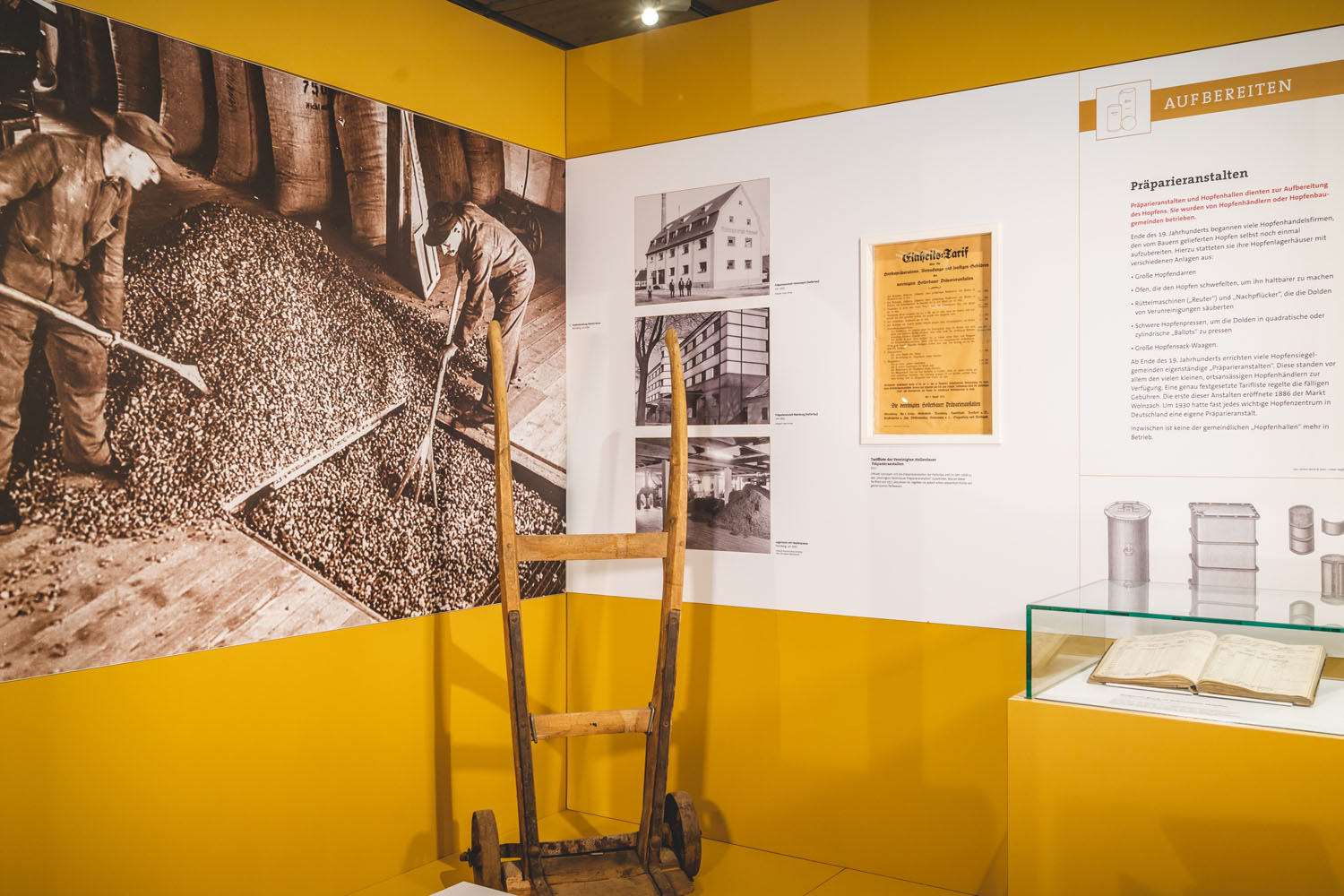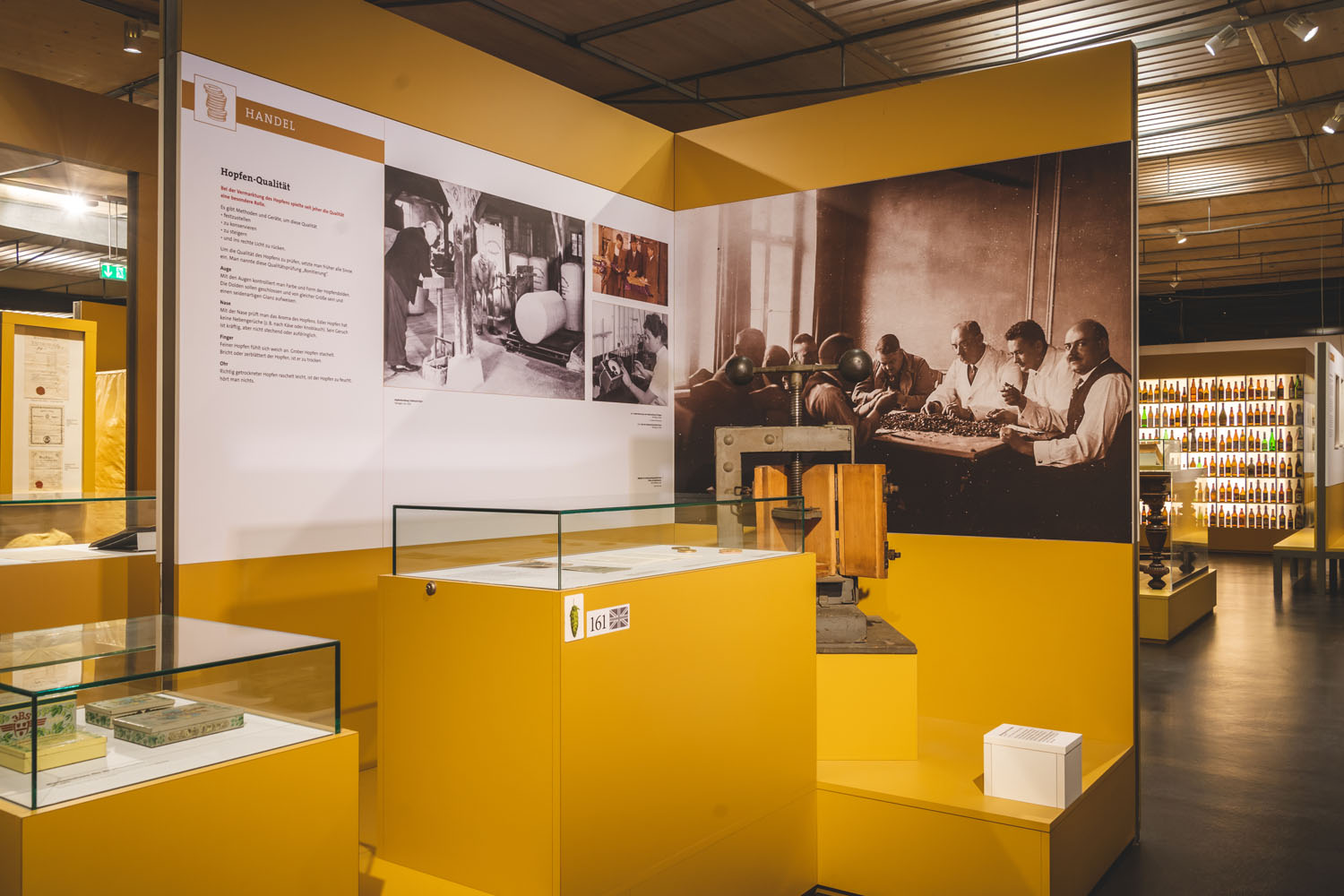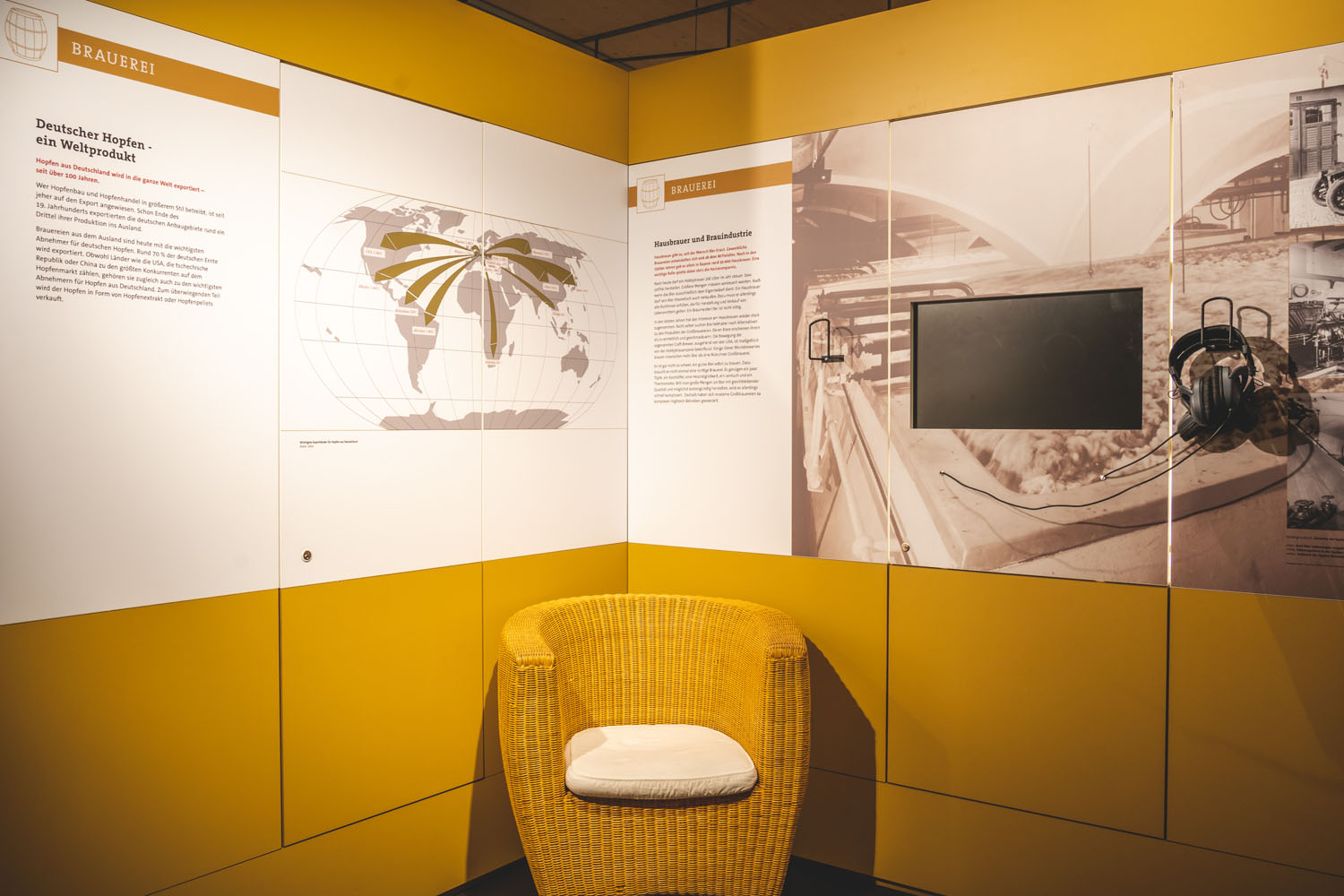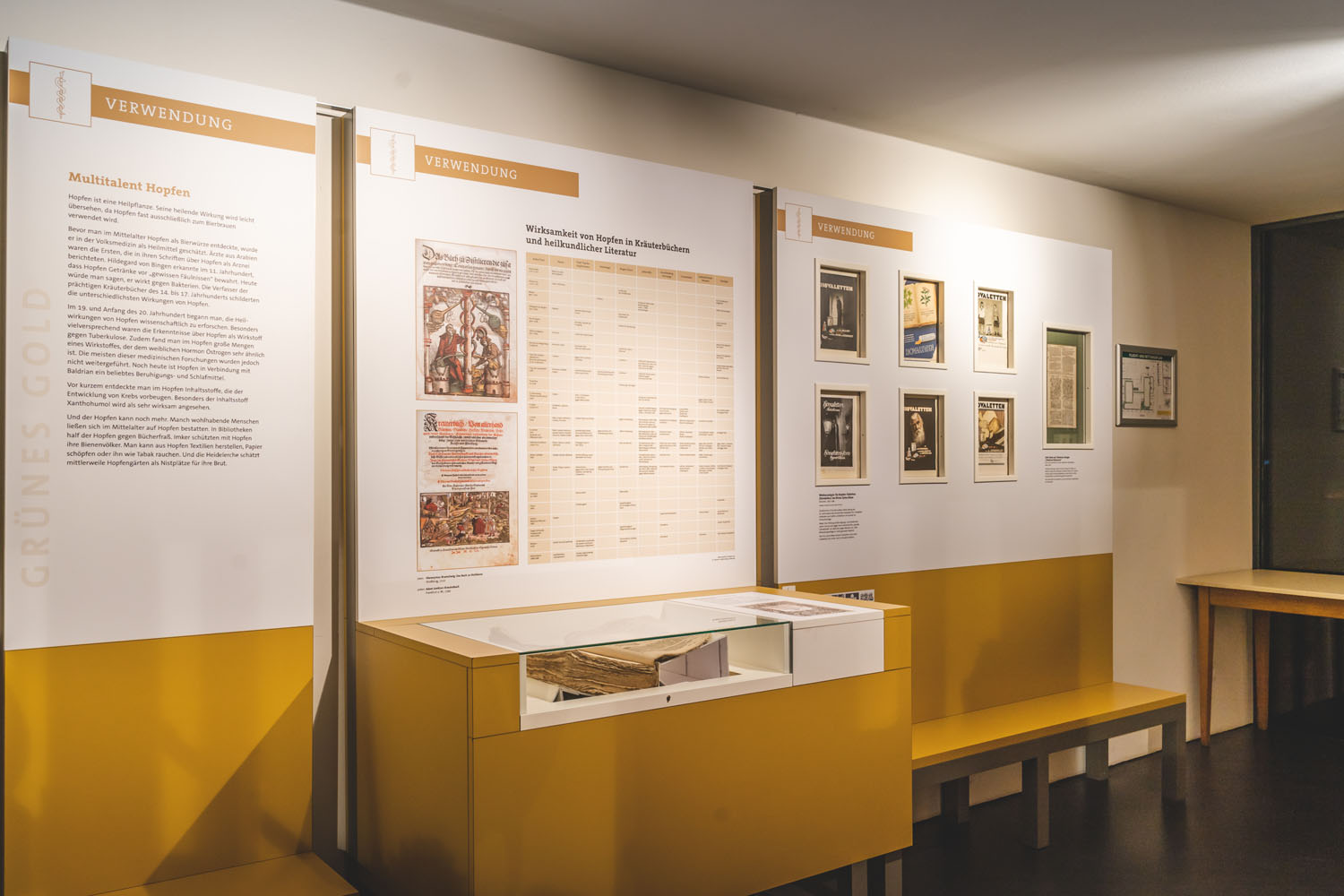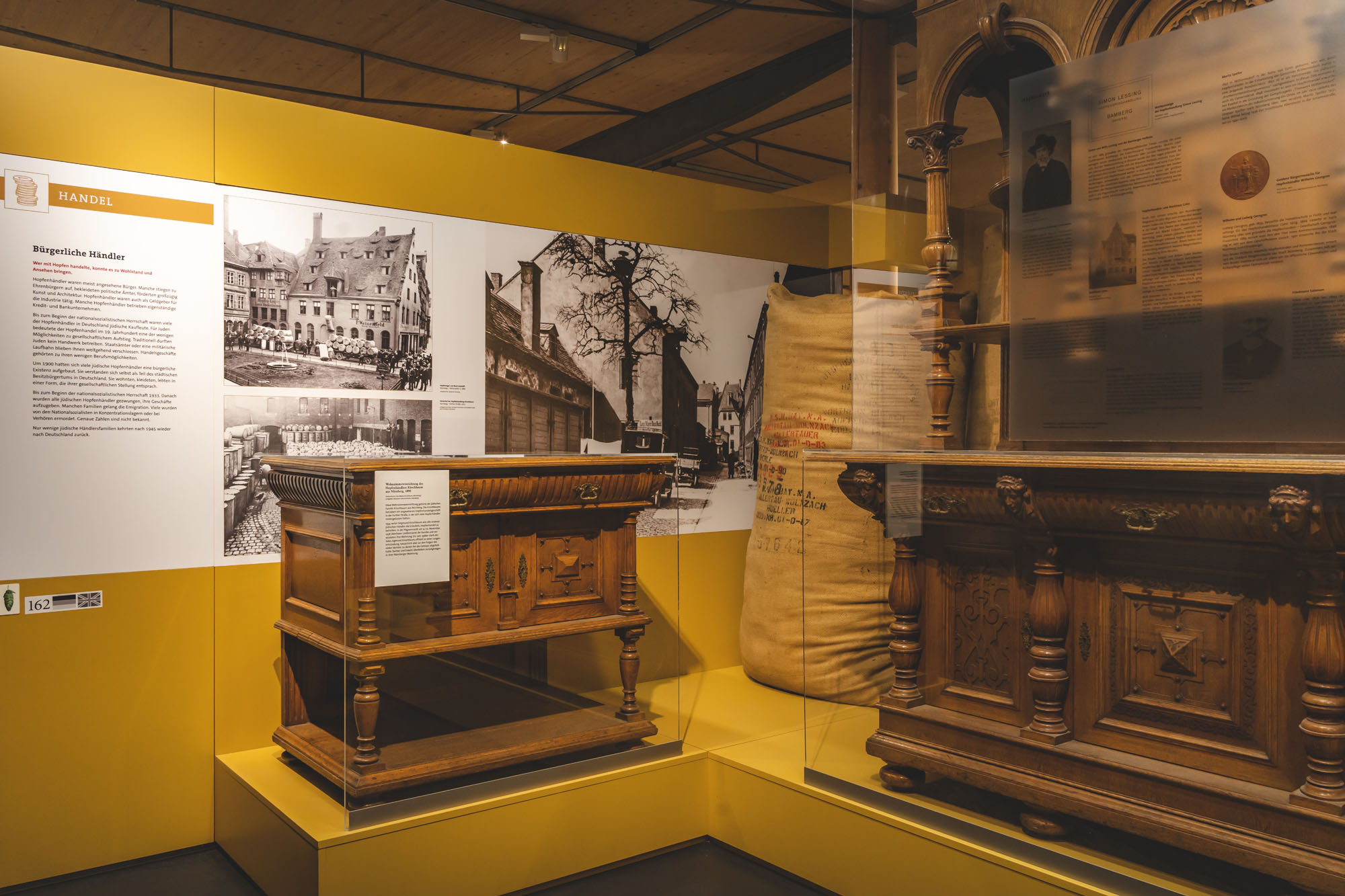
Face-lift for the permanent exhibition
All exhibition boards in the Hop Museum have been revised and reprinted. Extensive government funding.
Digital printing was still in its infancy when the German Hop Museum opened in 2005. For cost reasons, the decision was made to use modern technology anyway. And in the end it didn’t do badly. “People who understand something about it were always amazed that the plaques lasted so long,” says museum director Dr. Christoph Pinzl. On closer inspection, however, the signs of aging could no longer be overlooked. The edges of the large-format prints came loose almost everywhere, and some panels fell off the exhibition walls completely. UV light from the museum’s many window areas had bleached the prints, changed colors and made the printing foils crumbling. For a long time now, the condition of the exhibition boards has not been able to keep up with the high claim of being the central museum for hop growing worldwide.
Lots of new content
In addition, a lot has happened in terms of hops but also in the museum world since the opening of the museum. A lot of new material, especially photographic material, had been added to the museum collection, misprints had surfaced, but some of the texts could also be technically refreshed. Who is still interested in “current” hop export figures from 2003 or an introductory text on hop varieties that doesn’t say a word about flavor hops. Because 15 years ago nobody had it on their radar. And last but not least, a topic such as accessibility took its toll, keyword: readability. Typographic design can also get old.
For this reason, those responsible for the museum have been working on a fundamental relaunch of the entire stock of exhibition boards for a long time. With several hundred pieces, this is a challenge both financially and in terms of content.
Funded by the Federal Ministry of Food and Agriculture and the Federal Government Commissioner for Culture and the Media based on a resolution of the German Bundestag
The possibility of being able to finance a large part of the costs with federal funds appeared like the prospect of winning the lottery. The €7 million “Emergency Aid Program for Local History Museums and Agricultural Museums 2021” from funds provided by the Federal Government Commissioner for Culture and the Media (BKM) and the Federal Ministry of Food and Agriculture (BMEL) benefited 321 institutions in rural areas. For the second year already, the German Association for Archeology (DVA) has been advising and supporting the applicants with the planned measures and coordinating the use of the funds.
The expansion to “agricultural museums” was only added in 2021. With its connection to “regional museums in rural areas with up to 30,000 inhabitants, which focus on the topics of agriculture, food production, nutrition, horticulture, viticulture or fisheries”, it was tailor-made for the Hop Museum.
Although only discovered late in the year, the German Hop Museum tried its luck and actually received a funding commitment of up to 75% of the total costs. However, the prerequisite was that all work had to be completed by 2021. With a starting on October 7th, this is a sporting goal that therefore had to be postponed slightly to the end of February 2022 by application.
With the help of the museum association
It was also crucial that the Museumsverein Deutsches Hopfenmuseum e. V. quickly and easily accepted the matter and secured the financing of the remaining costs. Even if one or the other overtime was unavoidable for everyone involved in order to be able to meet the tight schedule – it was worth it. The last of the freshly printed panels were installed at the beginning of March and the museum has shone in new splendor ever since.
A precision landing was also achieved financially. The cost target was missed by just 1%, which is somewhat astonishing given the tight time frame and the many imponderables in advance of dismantling and assembling the panels and the technical intricacies of digital printing.
Everyone involved is very happy with the result. Museum visitors can expect not only a visually significantly refreshed impression. There are many new illustrations and details to discover on the new panels. A few new exhibits even found their way into the showcases or onto the platforms. Regular visitors to the museum in particular can look forward to the next time they find their way to the Hop Museum in Wolnzach.

